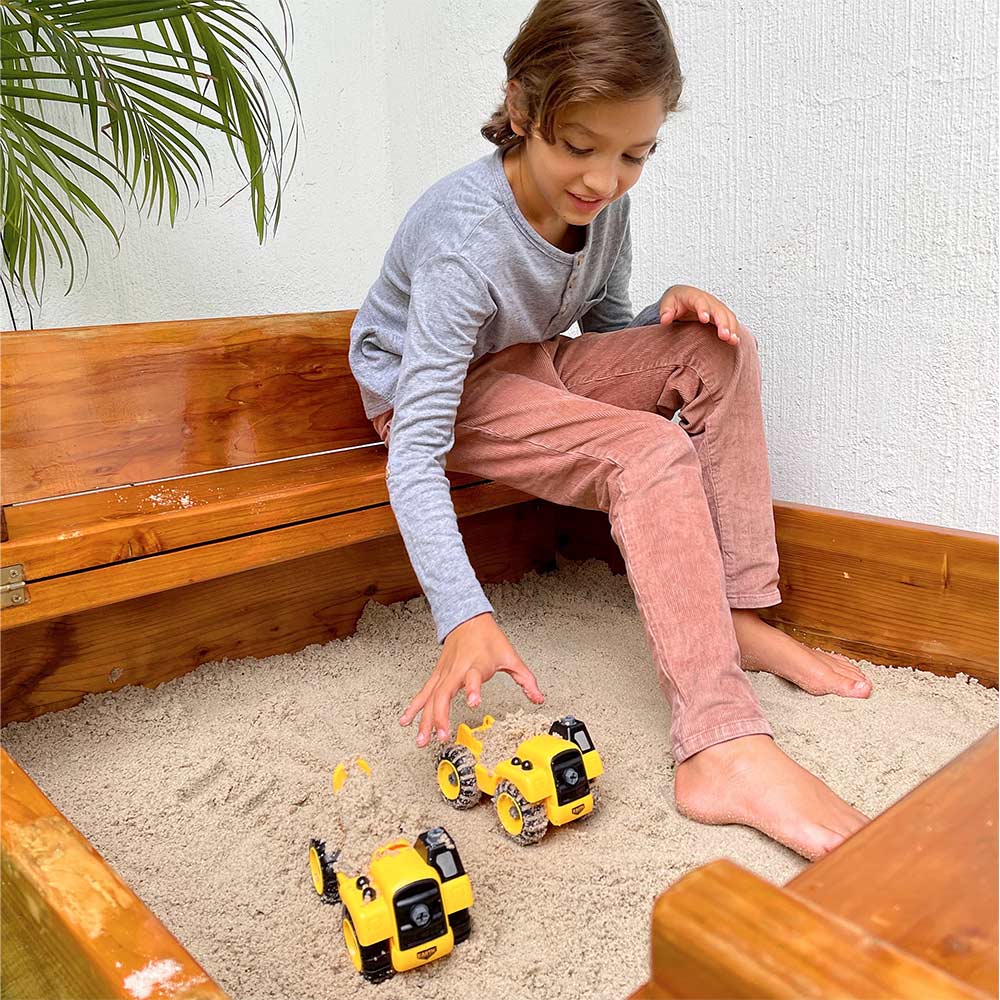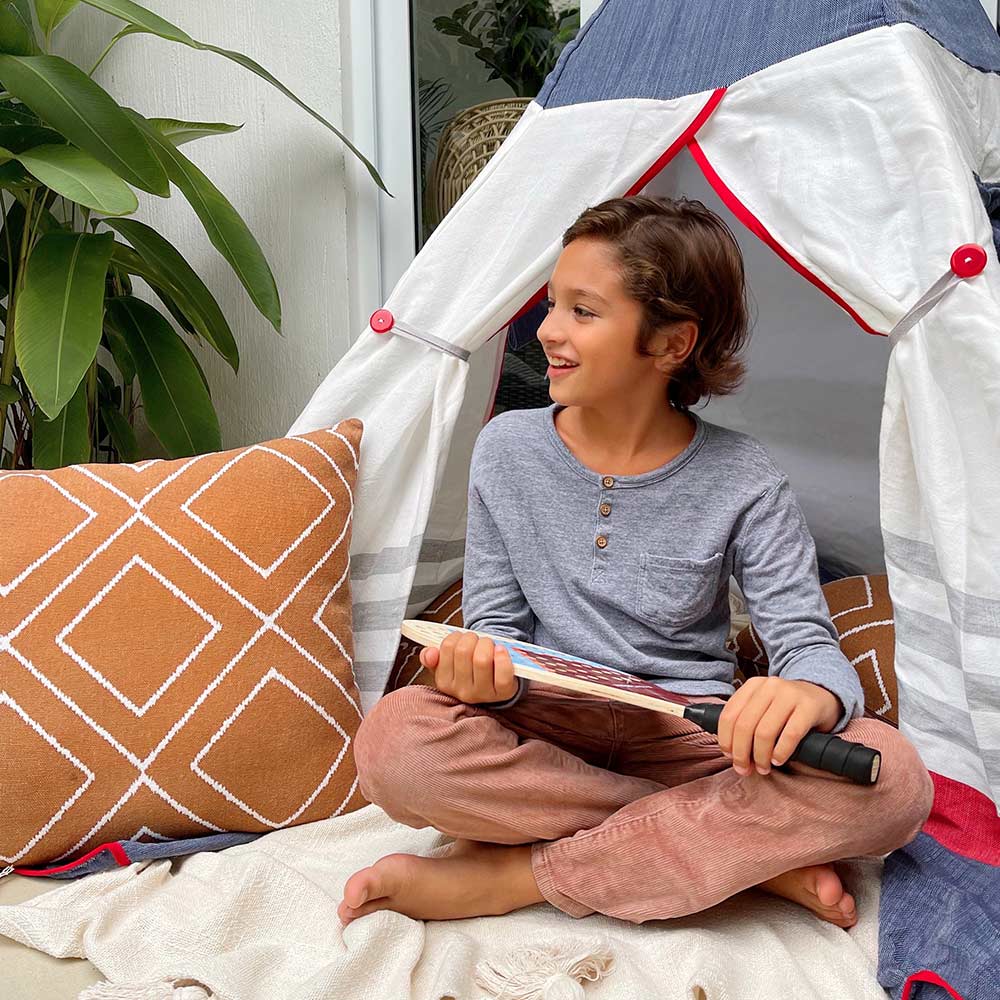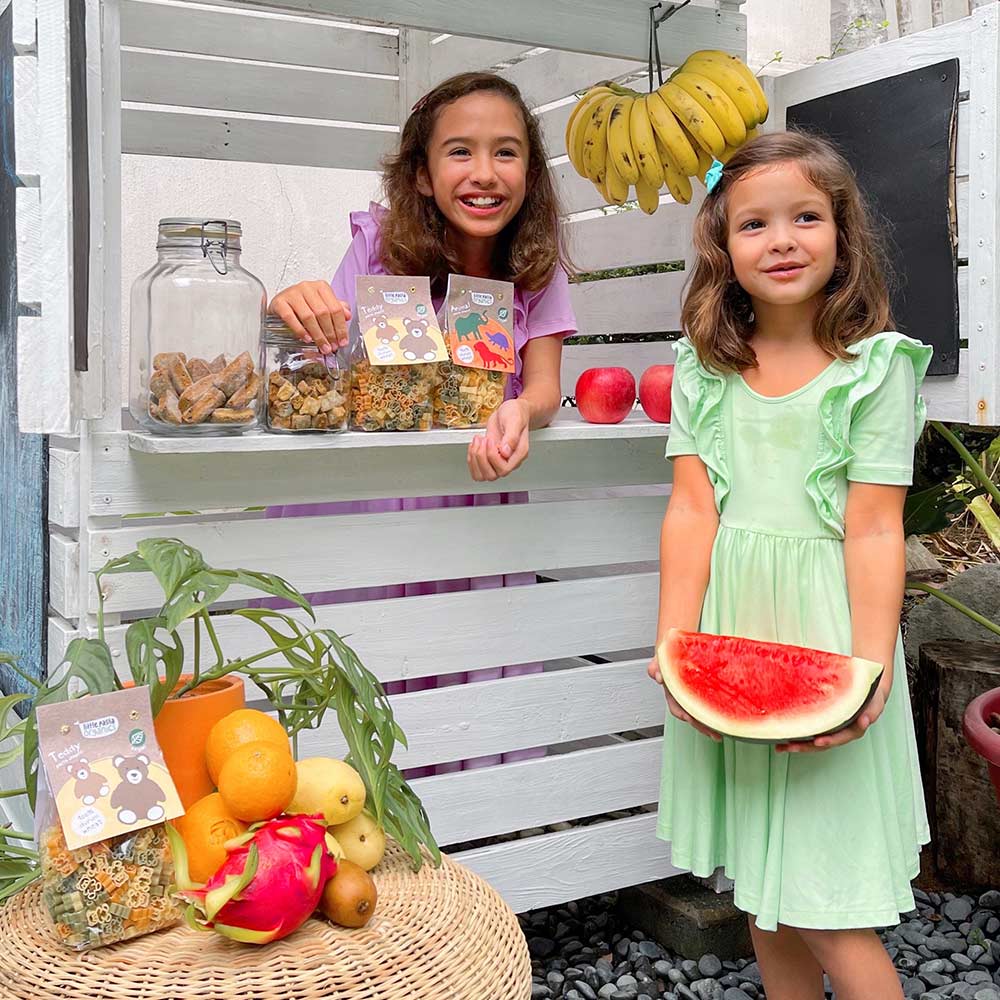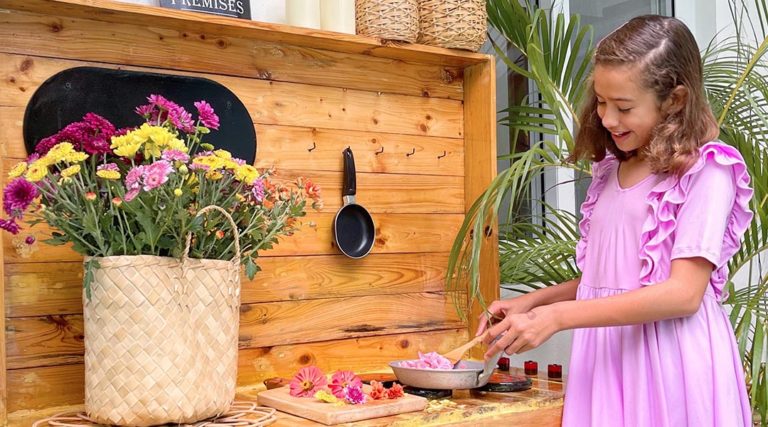Kids
Marie Field-Faith Shares Her Favorite Outdoor Play Ideas
As our children are spending more time at home, it is crucial that we find creative, fun and practical ways to get them some outdoors play time, without the need for a huge lawn, or garden.
Outdoor play helps support our child’s immune system in so many ways. From the sunlight that gives our kids that much needed vitamin D to interaction with the natural elements, like the soil, trees, plants and even insects and animals outdoors also help boost their immunity. And during times like these, it’s never been more important for our kids to stay and get healthy, which is why I’m sharing my favorite outdoor play ideas:

1. Messy Kitchen Play
Messy kitchen play allows our kids to enjoy the freedom of investigating the materials they gather from the surrounding outdoor area, and learn how it supplies them with fruits, flowers, leaves or even shade and shelter. It helps develop their core foundational skills as there is no task or objective set, and they are free to explore all sorts of possibilities with what they forage around the yard, garden or your veranda.
You can utilize an outdoor mud kitchen set if you have one, or just DIY a table or wooden chair, throw in some old kitchen equipment, kid-friendly cutting tools, bowls not being used anymore and let them explore and get messy. The key word is messy, let them get messy and really get into the touch and feel of these materials they are playing with. If you can’t handle the mess, look away for a few minutes and let them have fun!
Plus, it helps kids develop their problem solving skills
Children enjoy constructive play and working with sand, gravel or other natural materials. By encouraging constructive play, you can help a child develop problem-solving skills, muscle development and gross motor skills.
Playing with water and sand increases hand-eye coordination through actions like pouring, scooping, digging, hauling and when you add some water as well, scrubbing, squeezing and so forth. The different textures and temperature experiences help children acknowledge the sensory changes and respond to them.

2. Sand or gravel box play
It might look like simple sand play to us adults, but while kids engage in constructive play like sand play, they are developing a greater capacity for cognitive flexibility. It means they are learning how to come up with various solutions to one problem, allowing them to become problem solvers. Being able to imagine solutions to difficult problems will help children succeed in school, relationships and life in general.
You can get a wooden outdoor sandbox for them with benches for comfortable play, or again DIY just a box or a basin and allow them to engage in constructive play there. Remember that kids don’t really need a full-on set up to play. They can play with anything so don’t overthink it.Set it up in your back yard, your garage, your lanai or your veranda. Just somewhere they can breathe some fresh air and get some sunlight while playing.
And, it encourages them to use their imagination
Playing make believe encourages kids to use their imagination. It teaches them social roles and let them hone their life skills as they come up with creative solutions and new ideas during role play. Creativity is a valuable skill a child can use throughout their life and it’s a skill worth developing early on.

3. Imaginative play with tents or play houses
I am sure all of us had fond memories of our childhood days when we used to build forts and playhouses out of blankets, pillows and even furniture! These days it is easier to create play areas with teepees, play tents, and even play houses available for purchase. We really need to take advantage of this, because children who are ableto exercise their imagination are less likely to feel bored, and playing make-believe helps children process their emotions in a healthier way.
They also become better playmates because kids who utilize their imagination are also more able to empathize how others feel, therefore, may be more attuned to the needs of other children – like their siblings. At least, I keep hoping so!
It helps develop their empathy
Children have to practice communicating positively and productively when they play outside, to reach common goals. In an unstructured outdoor environment, it’s up to them to make up the rules. As a result, children learn to listen, plan and share knowledge with other children so they can continue having fun. When children play outside, it puts them in a variety of circumstances that allow them to practice empathy and become more aware of other children’s feelings. Playing various games and roles also teaches children self-control and ways to resolve conflict. As children engage in free, unstructured, play they try on different perspectives and test a range of emotions so they can ultimately relate better to others.

4. Market day role-playing
Yes, we are all missing that feeling of being able to enjoy open markets once again, and I bet our kids are also feeling the same. So why not set up a pretend market in your little outside space and allow them to role play as a shop keeper, a shopper or a cashier. This allows them to play different roles and test their reactions and responses to different situations, while being in a safe world of make-believe. Playing shop is great for educational learning too, especially if they can practice some of their math skills and their vocabulary!
It lets them sleep better
Many children are not getting enough sleep for various reasons, such as too much screen time, busy schedules, or a lack of routine bedtime schedule. Fortunately, allowing them to play outside helps kids get the sleep that they need. When kids play outside, they get some exposure to sunlight, which helps regulate their bodies’ internal clock. Moreover, active play allows them to burn energy, so they feel more tired when it’s their bedtime.

5. Free unstructured play
Sometimes as parents we tend to overthink about how we will set up something for our kids to play with. But the truth of the matter is they don’t really need anything for them to play and enjoy some playtime.
Unstructured free play is great for them to just be outside and explore. Sooner rather than later, you will observe that they are already playing, maybe you will even hear them talking to themselves in different fun voices as they engage in play. Or if they have siblings, they would have invented a game already. Let them play and try not to instill a structure or a system for them to follow. Just sit back and watch them so they remain safe in their adventures but try not to meddle.
In our case, sometimes just allowing them to play with the garden hosepipe already incites a lot of excitement and active play. They play tag, play hide and seek, play statue, and all kinds of games without us parents telling them what to do.
The key is to let them play.
We hope that you have found these suggestions helpful and insightful to help all of us keep our kids happy and healthy while staying home.
Love this article about outdoor play? You’ll want to check these out:
Here’s What This Doctor Wants Parents To Know About Kids Going Outdoors
Top 5 Beachfront Private Rentals To Take Your Kiddos





